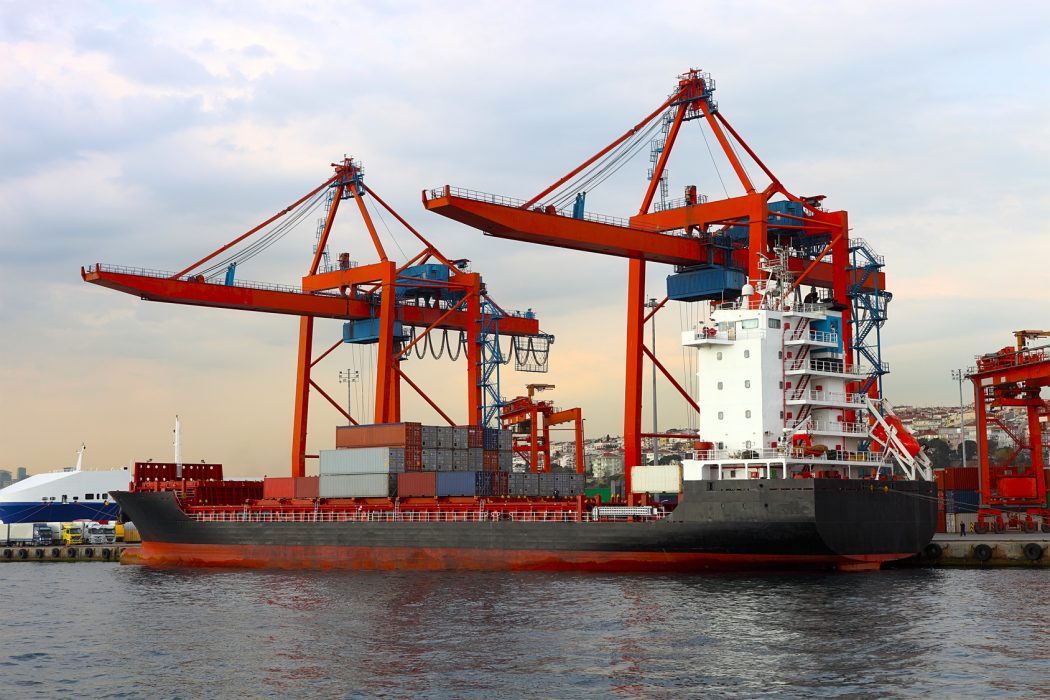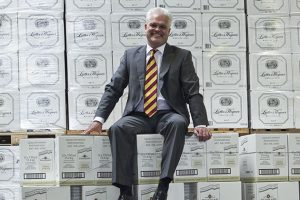On a cold winter’s day in a warehouse on the outskirts of Mainz, Germany, it doesn’t feel like you’re standing in the control room of a global logistics business. Partly that’s because everybody is low key as they go about their business and also because, disappointingly, there are no James Bond-like control panels showing the movement of ships and planes around the globe.
But what it lacks in gadgetry, Bernd Jordan, managing director of JF Hillebrand Germany, makes up for in his infectious enthusiasm for the logistics of the global beverages trade. “We do budgets and forecasts and see where markets are growing,” he says. “We can see which price ranges are shrinking or growing and carefully monitor the trends from bottle wines to bulk wine.” The wine world is dynamic, he says, with everyone on the globe constantly changing their inventory and sourcing from new suppliers as trends change – which means they have to be ready to pivot as well.
Four billion litres a year
Founded in 1844, JF Hillebrand, which remains privately owned, this year celebrates 170 years of continuous trading. It began as a freight commission business on the Rhine River, when Johann Friedrich offered loading, unloading and customs clearance services to the river-barges connecting Mainz to Amsterdam and Rotterdam. By the middle of the 19th century, the wine trade was booming and the services extended to both land and rail, and into new territories such as eastern Europe and America. Although its warehouses and offices were destroyed in World War II, and the company had to almost begin from scratch, JF Hillebrand never stopped trading.
But a big turning point in the modern wine trade came in the 1960s when Jan Hillebrand and his partner Paul Ebert realized the sea container was the ideal way to ship wine to anywhere on the globe. Today, JF Hillebrand is the largest specialist player in the beverage logistics trade. It employs 2,000 people in 57 offices around the world, and shipped more than 440m cases of wine in 2013. Jordan himself worked with TNT Express, United Parcel Service and rival Kuehne & Nagel, before moving to JF Hillebrand in 2002.
Innovation has always been crucial to the company’s success. Jordan walks over to a shelf covered in what look like silver space blankets. These are VinLiners – protective foil liners designed and produced by the company to protect cargo in transit, when using refrigerated reefers are too expensive. He can also describe the ins and outs of flexitanks, which can ship around 24,000 L of bulk wine – more than twice as much as can be moved in a single container of bottled wines. These are increasingly important now that UK supermarkets, in particular, are demanding UK-bottling to save financial and environmental costs.
As well as solutions, Jordan can also reel off a list of the problems that can face wine in transit. The liquid from one broken bottle in a truck can quickly ruin all the stock around it. There are places where wine risks being left cooking on the docks in tropical heat. “We could talk about Odessa,” he says, “where in winter time it’s -25˚C in port. If the cargo isn’t released in time because the authorities are slow, then your container is frozen and your cargo is lost.”
To a wine producer, this is the stuff of horror movies. But to Jordan, these are simply potential issues the company is aware of so they can prevent them. “Most problems are related to administration barriers,” he says. “A company sends one case and it went well, but now they want to make a true shipment and they’re not sure how. There could be excise issues, or legal restrictions.” In some markets, certain types of packing materials are not allowed, or wooden pallets are forbidden for quarantine reasons. Or what happens when a small container of wine is to be broken up and sent to different markets, each of which has its own tax slip to be applied to the bottle? The company’s solution is a business in Riga, where teams of workers put the correct labels and tax stamps on every bottle by hand, before they are shipped to countries like Poland and Russia.
Some Asian customers are very particular about how their wines are handled, so “we operate reefers once a week from France to Asia with expensive wines. You keep everything at the same temperature.” This means that when the wines pass over the equator or into tropical zones, they won’t be affected. “It’s a good solution as long as the price of the wine can afford this kind of treatment.”
And if it can’t?
“We can advise that the cargo can be routed another way,” he says. “Maybe it will take longer, but it’s safer.” The company has a worldwide temperature database, with more than a century’s worth of data in it. “We know, on average, how the temperature will influence a container on its way to its final destination.”
The key to getting wine to where it needs to be often lies in knowing about the forms that have to be completed. “We can take care of the operations, and we can make sure it’s shipped safely and reliably, but if a certain piece of paper isn’t there, we can’t overrule the local authorities,” says Jordan. The solution, he says, is for customers – particularly those new to the market – to talk about it in advance. “We have customers who do great business for years in certain trades, and then they come up with a new opportunity and we help them to understand how other markets might be different.”
In practice
So how does dealing with a logistics company work in practice? Say you’re a small boutique winery in New Zealand and you’ve just won your first export contract. But the volume is very small. What do you do?
“The first question we ask is who your importer is,” says Jordan. “We definitely know them, because we know all the market players.” One option is for the winery to consolidate its wines with others leaving the country. They don’t all need to be going to the same final destination – the shipment might arrive, for example, at Rotterdam, where it will be broken up and sent to its final market. If the first wines prove to be a big hit, and larger quantities are ordered – say, by a UK supermarket that wants to promote this interesting new winery from New Zealand – “then we would look at another transport mode, which could be by air or sea or a combination of both.” And then if that promotion goes well and it looks like the winery will have bursts of sales in the future, “we could offer to build up a buffer warehouse in the UK. We do buffer stocks for customers, so that if a few containers don’t arrive on time, we can deliver from that warehouse.”
Jordan says the reason the company can be in virtually all places at once, is because instead of owning the ships and trucks, they are tapped into the world’s transport system. The key to making the complex system work is tracking. As soon as wine is handled at any point, the operator records the transaction. “We’re not scanning like it’s a package,” says Jordan. “We’re scanning the different parts of the journey.”
Say there’s a wine being exported to an important trade tasting in Chicago, but for some reason it missed its departure from Rotterdam – maybe the captain decided the weather was too stormy to take on extra cargo, so left it behind. “We get a non-conformance report and know that we missed the boat. We now take corrective action.” One solution might be to break up the cargo and send some by air, on the next direct flight to Chicago, and then send the rest later. “Operationally, we can do anything,” says Jordan. “It’s what’s feasible and cost effective. For wine, a vessel is normally the best solution, not just by sea but also by river.”
Because the company supplies logistics, rather than ships, JF Hillebrand can quickly adjust to changes in the wine trade. “If wine from Spain suddenly becomes more sexy, we are ready because we have two or three sites. We can serve the market even if it doubles,” he says. “But then currencies and regulations change somewhere else and suddenly somebody can’t sell to Russia any more, so they have to push more into other markets.”
Jordan keeps talking as he walks around the warehouse. Everything has been meticulously placed, with cartons sitting neatly within perfectly painted lines, so that if customs officials ever visit, they will find everything in good order. There is also what appears to be a soccer field full of cases of popular sparkling wine on the upper level. So what does Jordan himself drink?
“I like wine, but I am not a fine wine specialist,” he says.
Maybe not, but he appears to know more about wine than almost anybody else in the world: Who’s making what, where their export markets are, who their customers are, and when their wine is on promotion. All this invaluable market intelligence stays firmly inside the company. “We treat everyone fairly. The supplier is important to us, even though he’s not our customer, so we help. Next time he might be the one importing, so if we help them to improve as a team, we become a respected partner in the business.”
So perhaps it’s not surprising that he doesn’t name the brands of wine he particularly likes. He’s keeping it fair.





